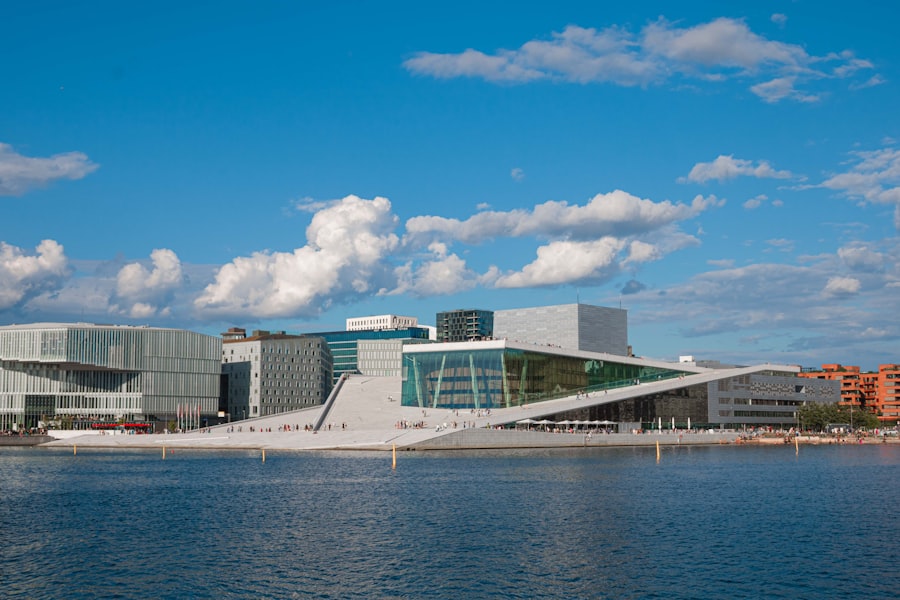The Norwegian Krone, abbreviated as NOK, serves as the official currency of Norway, a nation renowned for its stunning fjords, rich cultural heritage, and robust economy. The term “krone” translates to “crown” in English, reflecting the historical significance of monarchy in the region. As a currency, the krone is not merely a medium of exchange; it embodies the economic stability and resilience of Norway, a country that has successfully navigated various global financial challenges.
Understanding the krone is essential for anyone looking to engage with Norway, whether for tourism, business, or investment purposes. The krone is subdivided into 100 øre, although the use of øre coins has diminished in recent years. The currency is issued by Norges Bank, Norway’s central bank, which plays a crucial role in maintaining monetary stability and regulating the money supply.
The krone’s value is influenced by a myriad of factors, including oil prices, interest rates, and global economic conditions. As such, it is vital for individuals and businesses alike to grasp the nuances of the Norwegian krone to make informed financial decisions. Take the first step. Book a consultation with the Norway Relocation Group for your move to Norway.
Summary
- The Norwegian Krone is the official currency of Norway and has the symbol “kr” and the ISO code “NOK”.
- The Norwegian Krone has a rich history dating back to the 19th century when it replaced the Norwegian speciedaler at a rate of 4 kroner to 1 speciedaler.
- The Norwegian Krone comes in denominations of coins and banknotes, with the coins ranging from 1 krone to 20 kroner, and the banknotes ranging from 50 kroner to 1000 kroner.
- The exchange rate of the Norwegian Krone fluctuates against other currencies, and it is important to consider this when converting money for travel or investment purposes.
- Factors affecting the value of the Norwegian Krone include oil prices, interest rates, and global economic conditions.
History of the Norwegian Krone
The history of the Norwegian krone dates back to the late 19th century when it was introduced in 1875 as part of the Scandinavian Monetary Union. This union aimed to create a stable currency system among Denmark, Sweden, and Norway. The krone replaced the speciedaler, which had been in circulation since the 1816 currency reform.
The establishment of the krone marked a significant step towards modernising Norway’s economy and aligning it with its Scandinavian neighbours. However, the Scandinavian Monetary Union was short-lived, dissolving in 1914 due to the onset of World War
Following this period, Norway adopted a more independent monetary policy, leading to fluctuations in the value of the krone. The interwar years were marked by economic instability and hyperinflation, prompting further reforms. In 1949, Norway pegged the krone to gold and later transitioned to a floating exchange rate system in 1992.
This evolution reflects Norway’s journey towards economic independence and its commitment to maintaining a stable currency.

The Design and Denominations of the Norwegian Krone
The design of the Norwegian krone is both functional and aesthetically pleasing, featuring iconic symbols that represent Norway’s rich cultural heritage. The current series of banknotes was introduced in 2017 and showcases various elements of Norwegian nature and culture. Each denomination features a unique design that highlights different aspects of Norway’s identity, such as its landscapes, wildlife, and historical figures.
The denominations of the krone include 50, 100, 200, 500, and 1000 kroner notes, along with coins valued at 1, 5, 10, and 20 kroner. The coins are made from various metals, giving them distinct appearances and weights. The banknotes are designed with advanced security features to prevent counterfeiting, including holograms and colour-shifting inks.
This attention to detail not only enhances security but also celebrates Norway’s artistic heritage.
Exchange Rates and Conversion
Understanding exchange rates is crucial for anyone dealing with foreign currencies, including the Norwegian krone. Exchange rates fluctuate based on supply and demand dynamics in the global market. When travelling to Norway or engaging in trade with Norwegian businesses, it is essential to keep abreast of current exchange rates to ensure fair transactions.
Currency conversion can be facilitated through various means, including banks, currency exchange offices, and online platforms. It is advisable to compare rates from different sources to secure the best deal. Additionally, many financial institutions offer tools that allow individuals to monitor exchange rate trends over time.
This knowledge can be particularly beneficial for those looking to convert larger sums or make investments in Norway.
Factors Affecting the Value of the Norwegian Krone

Several factors influence the value of the Norwegian krone in the global market. One of the most significant is Norway’s oil production; as one of the world’s largest exporters of oil and natural gas, fluctuations in global oil prices can have a direct impact on the krone’s value. When oil prices rise, so does demand for the krone, leading to an appreciation in its value.
Interest rates set by Norges Bank also play a pivotal role in determining the krone’s strength. Higher interest rates tend to attract foreign investment, increasing demand for the currency and driving up its value. Conversely, lower interest rates may lead to depreciation as investors seek better returns elsewhere.
Additionally, economic indicators such as inflation rates and employment figures can influence investor confidence in Norway’s economy and subsequently affect the krone’s value.
Using the Norwegian Krone in Norway
When visiting Norway, understanding how to use the krone effectively can enhance your experience significantly. Most establishments accept cash payments in kroner; however, credit and debit cards are widely used and often preferred for their convenience. Many shops and restaurants also accept contactless payments, making transactions quick and easy.
It is important to note that while cash is still accepted in many places, some smaller businesses may prefer card payments due to safety concerns regarding handling cash. Therefore, it is advisable to carry a small amount of cash for situations where card payments may not be feasible. Additionally, using local ATMs can provide access to kroner at competitive exchange rates; however, be mindful of any fees that may apply.
Tips for Exchanging Currency in Norway
Exchanging currency can sometimes be a daunting task for travellers; however, with a few tips in mind, you can navigate this process smoothly while ensuring you get a fair deal. Firstly, it is wise to avoid exchanging money at airports or tourist hotspots where rates tend to be less favourable due to higher service fees. Instead, consider using local banks or reputable currency exchange offices within cities for better rates.
Additionally, many banks offer online services that allow you to order foreign currency ahead of time for collection at your convenience. Always compare rates before making a transaction; even small differences can add up when exchanging larger amounts. Lastly, be cautious about using dynamic currency conversion services offered by some merchants when paying with a card abroad.
While it may seem convenient to see prices displayed in your home currency, these services often come with poor exchange rates that can lead to higher costs.
Investing in the Norwegian Krone
Investing in the Norwegian krone can be an attractive option for those looking to diversify their portfolios or hedge against currency fluctuations. As a stable currency backed by a strong economy and significant natural resources, the krone presents opportunities for both short-term trading and long-term investment strategies. Foreign exchange trading platforms allow investors to buy and sell currencies based on market trends and economic indicators.
Additionally, investing in Norwegian assets such as stocks or bonds denominated in kroner can provide exposure to the currency while benefiting from potential capital appreciation or interest income. However, like any investment strategy, it is essential to conduct thorough research and consider potential risks associated with currency fluctuations and geopolitical factors that may impact Norway’s economy.
Comparing the Norwegian Krone to Other Currencies
When comparing the Norwegian krone to other currencies, it becomes evident that its value fluctuates based on various economic conditions both domestically and internationally. For instance, against major currencies like the US dollar or euro, the krone has experienced periods of strength and weakness influenced by factors such as trade balances and interest rate differentials. The krone is often viewed as a safe-haven currency due to Norway’s stable political environment and strong economic fundamentals.
This perception can lead investors to flock towards the krone during times of global uncertainty or economic downturns. Understanding these dynamics can provide valuable insights for those looking to engage with or invest in currencies on an international scale.
The Role of the Norwegian Krone in the Global Economy
The Norwegian krone plays a significant role in the global economy due to Norway’s position as a major exporter of oil and natural gas. As energy prices fluctuate on international markets, so too does demand for the krone among foreign investors seeking exposure to these commodities. This relationship underscores how interconnected global economies are and how local currencies can have far-reaching implications.
Moreover, Norway’s commitment to sustainable practices has positioned it as a leader in renewable energy initiatives. As countries worldwide shift towards greener alternatives, investments in Norwegian energy sectors may further bolster demand for the krone while enhancing its status on the global stage.
Navigating the Norwegian Krone
In conclusion, navigating the intricacies of the Norwegian krone requires an understanding of its history, design features, exchange mechanisms, and broader economic implications. Whether you are visiting Norway for leisure or considering investment opportunities within its borders, being well-informed about this currency will undoubtedly enhance your experience. For those looking to learn more about Norway while mastering its language alongside financial literacy, consider enrolling in courses at NLS Norwegian Language School in Oslo.
These courses not only provide language skills but also immerse students in Norwegian culture and society—an invaluable asset when engaging with local customs and practices related to currency use. By equipping yourself with knowledge about the Norwegian krone and its role within both local and global contexts, you will be better prepared to navigate financial transactions confidently while enjoying all that this beautiful country has to offer.
Learn more about the Norwegian classes at the NLS Norwegian Language School in Oslo

